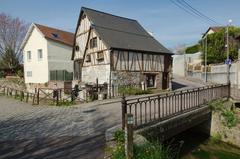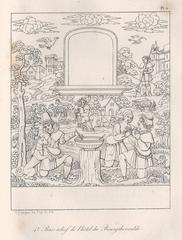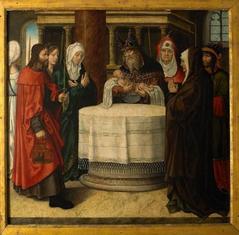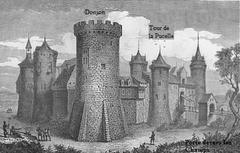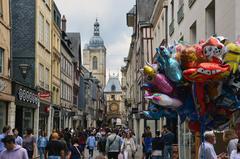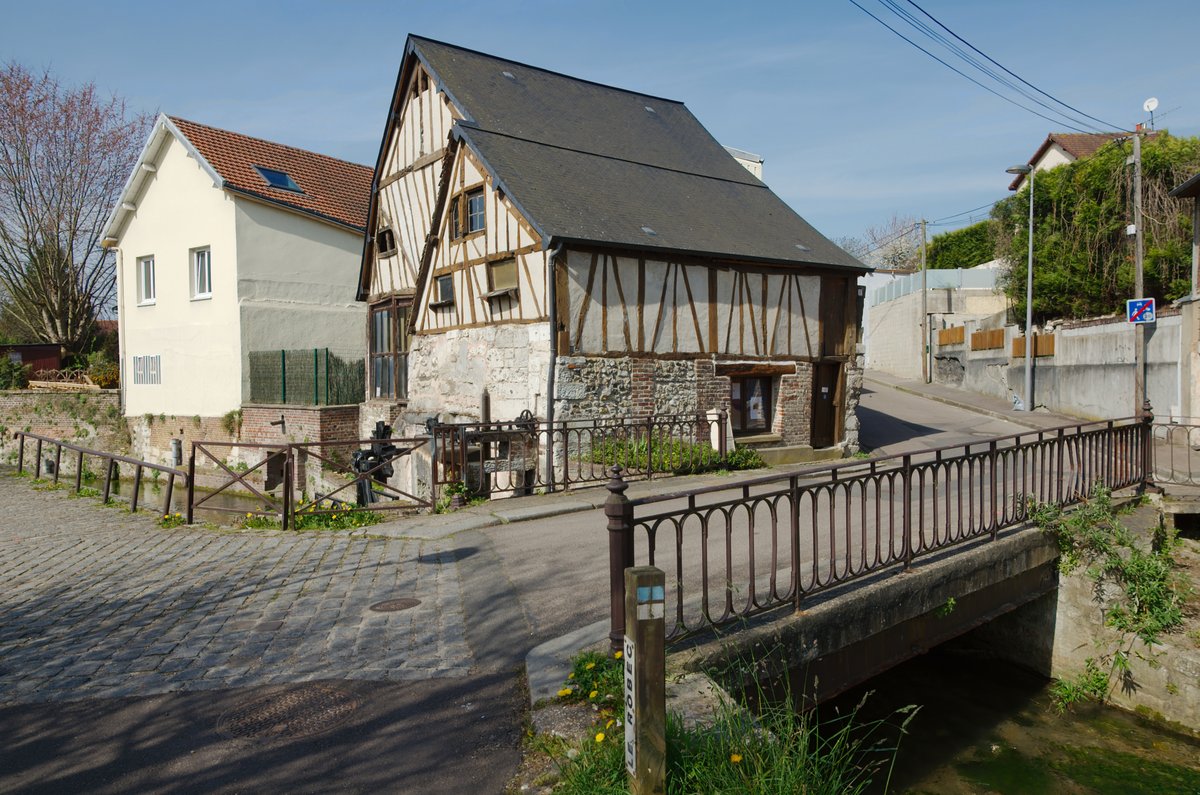
Moulin de la Pannevert: Visiting Hours, Tickets, and Historical Significance in Rouen, France
Date: 14/06/2025
Introduction
Nestled along the tranquil Robec River in Rouen, the Moulin de la Pannevert stands as one of Normandy’s most significant surviving watermills. This emblematic site not only reflects the rich industrial and cultural heritage of the region but also serves as a testament to centuries of local ingenuity, adaptation, and community stewardship. First documented in 1199, the mill—originally called “moulin du Val”—played a pivotal role in Rouen’s evolution, supplying flour and supporting industries such as textiles and leather tanning. Over the years, technological innovation and dedicated preservation efforts have ensured its continued presence as a vibrant cultural landmark (Patrimoine Normand; FDMF; Cirkwi).
This comprehensive guide details the mill’s historical evolution, restoration milestones, practical visitor information—including opening hours, ticketing, accessibility, and transport—and nearby attractions, ensuring a rewarding visit for all.
Table of Contents
- Origins and Early History
- Industrial Evolution and Challenges
- Restoration and Community Stewardship
- Visitor Information
- Nearby Attractions
- Frequently Asked Questions (FAQ)
- Visual and Interactive Resources
- Key Dates and Milestones
- Summary and Visitor Tips
- References and Further Reading
Origins and Early History
The Moulin de la Pannevert is among the oldest watermills in Rouen, with its existence confirmed as early as 1199 (Patrimoine Normand; FDMF). Strategically situated on the canalized Robec River, the mill was vital for grinding grain and supporting Rouen’s growing population and industries throughout the medieval period. For centuries, control of the mill rested with the Deschamps family, who oversaw its operation and contributed to its enduring legacy.
Industrial Evolution and Challenges
Growth and Adaptation
As Rouen’s economy expanded from the 16th to the 19th centuries, the Robec valley transformed from a landscape of market gardens to a bustling industrial corridor. The Moulin de la Pannevert adapted to changing technologies and market demands, shifting from an undershot waterwheel to a more efficient curved-paddle design between 1877 and 1881. This upgrade reflected broader industrial modernization, enabling the mill to diversify its activities, including milling grains, processing oak bark for tanning, and providing power for textile and dye operations (FDMF; Cirkwi).
Decline in the 20th Century
With the advent of large-scale, centralized industrial processes, small watermills like Pannevert faced obsolescence. The industrial corridor along the Robec diminished, and many mills were abandoned or razed. Despite periods of neglect and the encroachment of urban development, the Moulin de la Pannevert survived, its enduring presence safeguarded by a combination of its scenic setting and growing public appreciation for heritage sites (Moulins de France).
Restoration and Community Stewardship
Grassroots Preservation
The mill’s preservation owes much to local advocacy. In 1986, its wheel was restored by the Association des Amis des Monuments Rouennais, laying the groundwork for further community engagement. The founding of the Association pour la Sauvegarde du Moulin de la Pannevert (ASMP) in 2004 marked a turning point, mobilizing resources and volunteers for continued maintenance and restoration (FDMF; Rouen.fr).
Major Restoration Projects
Between 2010 and 2016, the mill’s deteriorating wheel was dismantled and reconstructed, thanks to collaboration among local authorities, private donors, and skilled artisans (Journées du Patrimoine; Guide Tourisme France). Additional repairs have addressed sluice gates and other vital structural elements, ensuring the site’s continued functionality and safety.
Cultural Programming and Environmental Stewardship
The ASMP hosts annual open days, cultural exhibitions, and educational events, such as art shows and heritage workshops. The site’s ecological setting is also protected through regular riverbank maintenance and partnerships with environmental groups.
Recognition
The Moulin de la Pannevert has been honored with several cultural and heritage labels, including the Label de la Fondation du Patrimoine (2011) and the Label de Normandie Impressionniste (2013, 2016), recognizing its significance as a historic and artistic landmark (Guide Tourisme France).
Visitor Information
Opening Hours and Tickets
- Open Days: The mill is generally open to the public during select weekends in May, June, September, and October, often coinciding with national events like the Journée Nationale des Moulins (third Sunday of June) and European Heritage Days.
- Regular Hours: Outside special events, the exterior is accessible year-round as part of public walking and cycling paths. Interior access is reserved for open days and guided events.
- Admission: Free during open days and most events; donations are welcome. Some workshops or special guided tours may require a modest fee (Rouen.fr; IGNrando).
Accessibility
- Physical Access: The site is accessible via the Route des Petites Eaux du Robec. Outdoor areas are wheelchair-accessible; however, the historic structure limits full access inside.
- Facilities: Benches, picnic spots, and informational panels are available. There are no restrooms or cafés on-site; these can be found in nearby neighborhoods.
Getting There
- On Foot/Bike: The mill forms part of several walking and cycling trails, including the “Robec et Aubette, sur la Route des Moulins” (IGNrando).
- Public Transport: Buses from Rouen city center serve stops near Place St Hilaire, from which the mill is a short walk.
- By Car: Limited parking is available in nearby residential streets.
Nearby Attractions
Enhance your visit by exploring Rouen’s other historic and cultural highlights:
- Rouen Cathedral: Renowned Gothic masterpiece and artistic inspiration.
- Musée des Beaux-Arts de Rouen: Major collection of Impressionist and classical works.
- Gros-Horloge and Old Market Square: Iconic medieval landmarks.
- Parc de la Pannevert: Green space adjacent to the mill, ideal for relaxation and picnics.
Frequently Asked Questions (FAQ)
Q: What are the Moulin de la Pannevert visiting hours?
A: The site is open year-round as an outdoor heritage area. Interior visits are available during special events and open days; check the official website for current schedules.
Q: Is there an admission fee?
A: Admission is free during open days; donations are appreciated. Some events may require a ticket.
Q: Is the mill accessible for visitors with limited mobility?
A: Outdoor areas are generally accessible; interior access may be restricted due to the historic structure.
Q: Are guided tours available?
A: Yes, during selected events and by prior arrangement through the ASMP.
Q: Can I volunteer or support preservation efforts?
A: Absolutely—donations, memberships, and volunteering are welcomed; details are available onsite and online.
Visual and Interactive Resources
- High-quality photos and interactive maps are available on the official website and IGNrando portal.
- Alt text examples: “Moulin de la Pannevert historic watermill in Rouen,” “Restored waterwheel at Moulin de la Pannevert.”
- Virtual tours and route planners are provided by local tourism platforms.
Key Dates and Milestones
- 1199: First documented mention of the mill (FDMF)
- 16th century: End of Deschamps family ownership (Patrimoine Normand)
- 1877–1881: Replacement of the original wheel with curved-paddle design (FDMF)
- 1986: First major wheel restoration (FDMF)
- 2004: Creation of the ASMP (FDMF)
- 2010–2016: Dismantling and full reconstruction of the wheel (Journées du Patrimoine)
- 2011, 2013, 2016: Receipt of major heritage and cultural labels (Guide Tourisme France)
Summary and Visitor Tips
The Moulin de la Pannevert embodies Rouen’s enduring industrial spirit and community pride. Its journey from medieval grain mill to a living heritage site showcases centuries of adaptation, technical innovation, and civic engagement. Visitors are rewarded with a peaceful riverside setting, educational displays, and the opportunity to participate in preservation by attending events, volunteering, or donating.
Visitor Tips:
- Visit during open days for access to interior spaces and guided tours.
- Wear sturdy shoes for walking uneven paths.
- Bring refreshments, as there are no on-site cafés.
- Use the IGNrando app for route planning.
- Support the mill’s future by participating in events or contributing to the ASMP.
